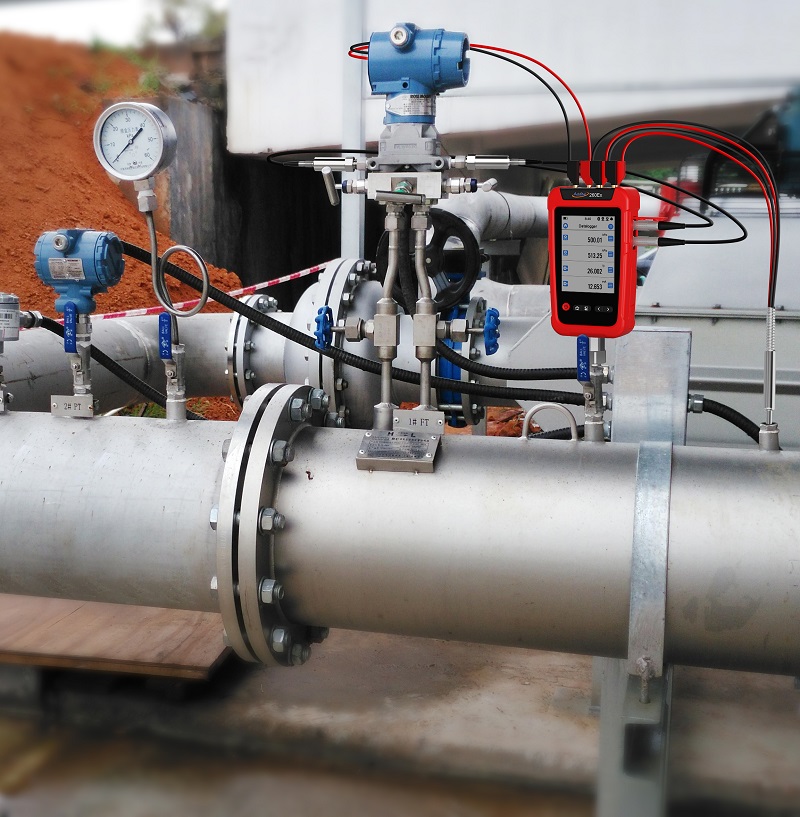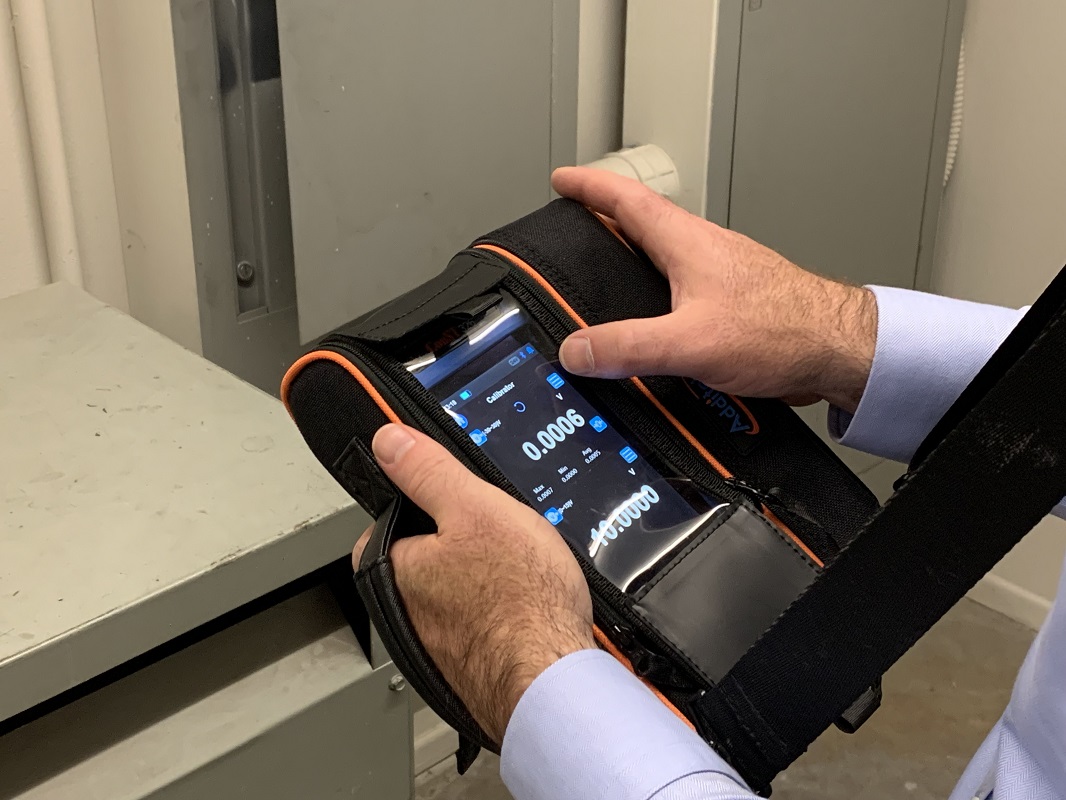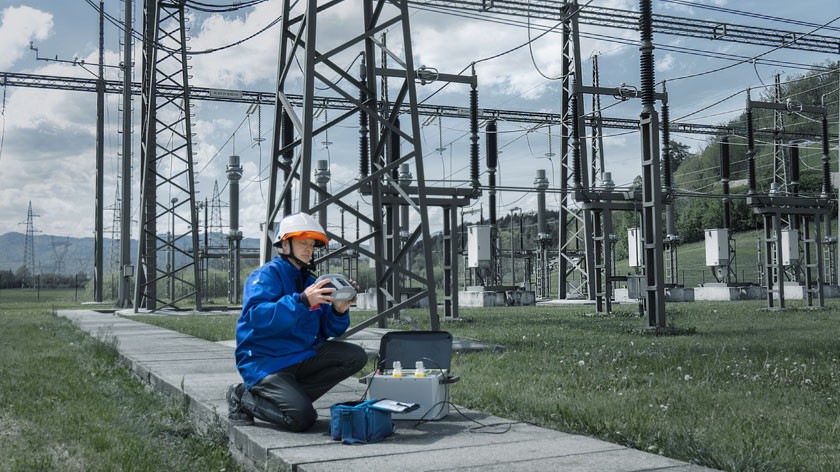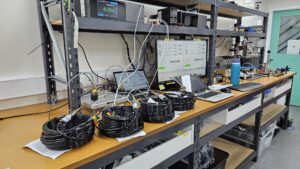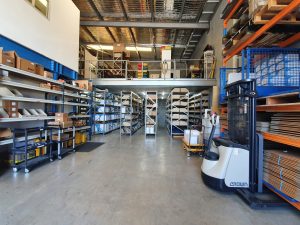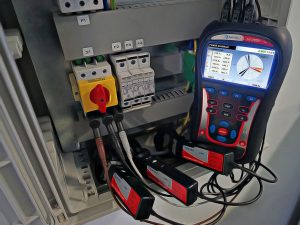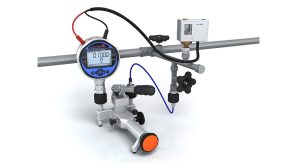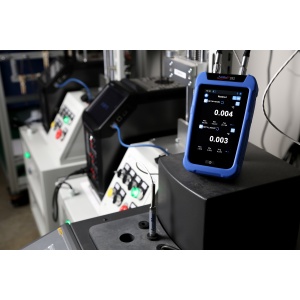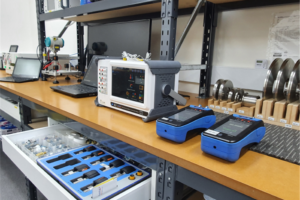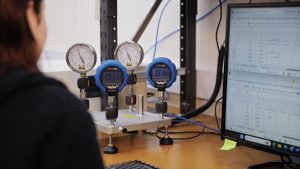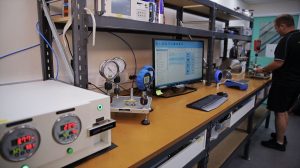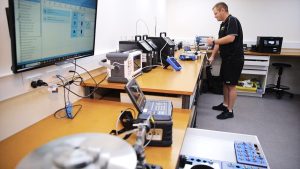This application note will describe the process and reasoning behind hydrostatic testing.
Hydrostatic Testing
Hydrostatic Testing (also known as stack testing or a hydro test) is a method of pressure testing various containment vessels. Hydrostatic testing is used across a variety of applications, some of the most common applications for this testing would be: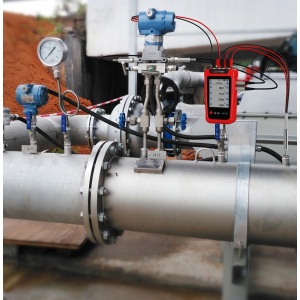
• Pipelines
• Tanks
• Homeowner use for plumbing
• Natural gas lines
• Fire extinguishers
• Gas cylinders
• Boilers
• Compressors
• Fire suppression systems such as sprinkler systems
• Distribution systems
When compared to other methods of testing the strength of a container, hydrostatic testing is one of the safest tests you can utilize to find your results. Essentially, hydrostatic testing can test the integrity of a containment vessel, and also check for leaks in your system. Hydro testing utilizes water as the test medium, which as we know is NOT compressible. If there is a leak in a plumbing system, or a failed integrity test of piping, the result is water bursting out of that area with very little pressure applied. Generally, hydro tests are performed at 1.5x the rated pressure of the containment vessel. The vessel, pipe section, tank, or whatever application you may have is partially filled with water and then pressurized up to the 1.5x the value of the pressure rating. Most hydro tests are about 8 hours in length, but it is not uncommon for a test to be run for up to 24 hours!
Equipment Needed
The equipment that is used to perform these hydrostatic tests is quite antiquated and much of it has not changed since hydrostatic testing became the most reliable testing for these applications. The typical equipment list for this testing consists of:
• Chart recorders for pressure and temperature
• Deadweight Testers
• Pressure Relief Valve
• A pressure gauge showing the pressure inside of the piping
A chart recorder? What’s that, you ask? Traditionally, hydrostatic testing required a chart recorder for pressure and temperature to log these readings. Chart recorders were invented in the mid-1800s and were first used for environmental testing in 1915 and the technology has never really changed. Essentially, a chart recorder is a piece of circular shaped paper that rotates in a circle. As the paper rotates, there is a pen for temperature and a pen for pressure. These pens would “chart” the temp and pressure readings for the duration of the test. Many chart recorders require a key to wind the clock, much like your grandfather’s clock from 1900! Later on, there was a huge advancement of the 9v battery replacing the wound coil, and that is where innovation on this from has pretty much stopped.
With this 100-year-old method of testing, there are loads of things that can cause an error in this test. With testing being 8 to 24 hours, do you really have the time to waste on pens that run out of ink, technicians losing paper results, liquid getting onto the paper and making your ink bleed, coils needing to wound, batteries dying, storage of the charts, etc. Imagine the heartache when you collect your chart after 24 hours and the pen didn’t work after hour number 2! Chart recorders are still frequently used in situations where immediate visuals of a test are needed, but maybe there is no access to power, or no access to a computer. However, with today’s data loggers decreasing costs and power requirements, the chart recorder is quickly dying out as the preferred method for these tests. In addition to these chart recorders, you would typically also need a pressure gauge that is put in line and also a pressure reliefvalve. So wait, are we saying that we don’t need to use 100 year old technology any longer? Yes, we are!
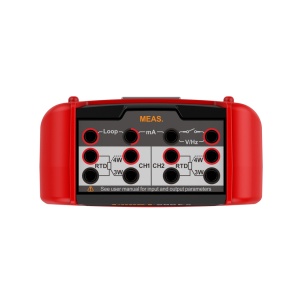 Introducing the Additel 260Ex! This unit will bring you into the world of performing your hydro tests in a digital manner! Instead of lugging out 50lb chart recorders, changing papers and pens, winding coils, and rushing out in the rain with a trash bag to cover the chart recorder…now it is all done digitally and in the palm of your hand. In the digital version of this test, we replace analog gauges with our digital pressure sensors. We replace the RTD that has its results stored by pen and paper and utilizes resistance temperature detectors (RTDs). Now with the Additel 260Ex you can connect 2 RTD devices for your ambient and pipe temperature. You can utilize the pressure modules to read and record the pressure and you are tossing paper charts in the trash and storing your results digitally. When performing your hydro test with our 260Ex, this is what you would expect:
Introducing the Additel 260Ex! This unit will bring you into the world of performing your hydro tests in a digital manner! Instead of lugging out 50lb chart recorders, changing papers and pens, winding coils, and rushing out in the rain with a trash bag to cover the chart recorder…now it is all done digitally and in the palm of your hand. In the digital version of this test, we replace analog gauges with our digital pressure sensors. We replace the RTD that has its results stored by pen and paper and utilizes resistance temperature detectors (RTDs). Now with the Additel 260Ex you can connect 2 RTD devices for your ambient and pipe temperature. You can utilize the pressure modules to read and record the pressure and you are tossing paper charts in the trash and storing your results digitally. When performing your hydro test with our 260Ex, this is what you would expect:
• Utilizing the 260Ex pressure module to monitor and record the internal pipe pressure
• One RTD utilized for pipe surface temperature
• One RTD utilized for ambient air temperature, or ground temperature
Now we are recording all three parameters of our testing with one device and doing it all simultaneously! At the end of your test, you simply transfer your results to a PC and print them out. Obviously, a gigantic benefit of our 260Ex is that there is no longer 300lbs of equipment to carry out to your test, there are no misplaced chart papers, and no spoiled tests all while gaining more accuracy, more test result storage space, less cost and a much cheaper yearly calibration all while still having the opportunity to view your test results in real time while they are being logged!
The Additel 260Ex has internal storage for up to 10,000,000 data points, which is more storage than you will ever need and more than can even be stored on a piece of paper. The Additel 260Ex also connects to our cell phone app, Additel Link. 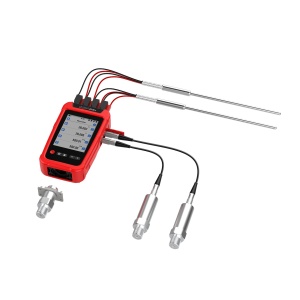 Now you can view your real time test results from the coziness of your work truck with the heater or air conditioner cranked up! You can run up to 8 measurement channels on the 260Ex and navigation is a breeze thanks to the 4.4” LED backlit touchscreen. Is it raining during your test? No worries, the Additel 260Ex carries an IP67 waterproof rating. The ADT260Ex has passed the most stringent ATEX, IECEX, CSA, and UKCA intrinsic safety certifications. Each unit complies with a certification level of Ex ia IIC T4 Ga. This highly qualified reference recorder can be widely used in potentially explosive gas environments, such as oil and gas platforms, refineries, chemical and petrochemical plants, pharmaceutical industry, energy, and gas processing industry. Bring your testing to the 21st century and eliminate failures with our new 260Ex!
Now you can view your real time test results from the coziness of your work truck with the heater or air conditioner cranked up! You can run up to 8 measurement channels on the 260Ex and navigation is a breeze thanks to the 4.4” LED backlit touchscreen. Is it raining during your test? No worries, the Additel 260Ex carries an IP67 waterproof rating. The ADT260Ex has passed the most stringent ATEX, IECEX, CSA, and UKCA intrinsic safety certifications. Each unit complies with a certification level of Ex ia IIC T4 Ga. This highly qualified reference recorder can be widely used in potentially explosive gas environments, such as oil and gas platforms, refineries, chemical and petrochemical plants, pharmaceutical industry, energy, and gas processing industry. Bring your testing to the 21st century and eliminate failures with our new 260Ex!

